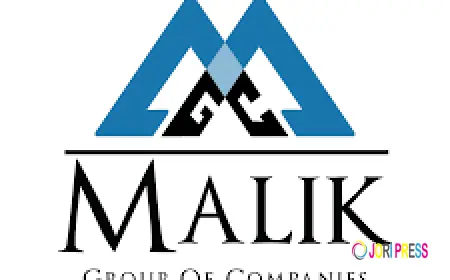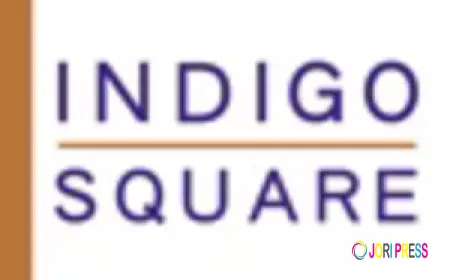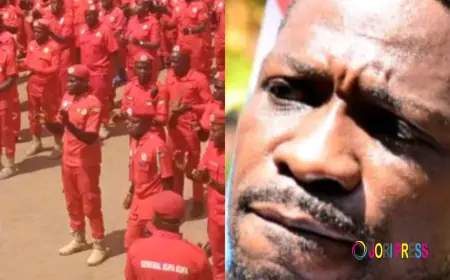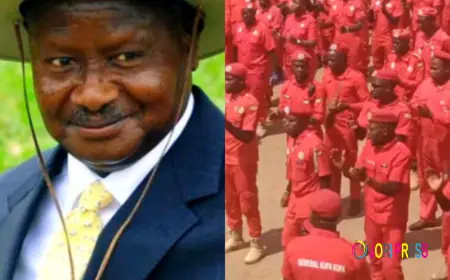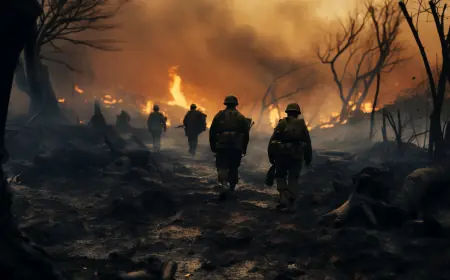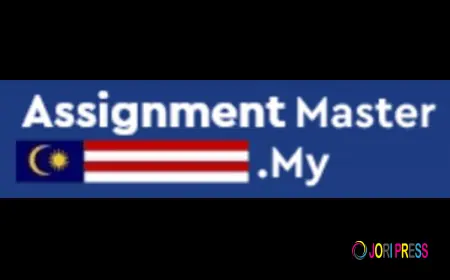IGAD region pays price of climate inaction


Millions in East and Horn of Africa face hunger, thirst, and debt as rich nations fail to honour climate commitments
NEWS ANALYSIS | RONALD MUSOKE | At dawn in Lokitoeang’aber, a village in Turkana County in northwestern Kenya, the air is dry, still, and heavy with dust. The cracked earth beneath the feet of the women trudging in single file offers no relief.
Each step forward takes them closer to the nearby village water point. Leading the line is Joyce Achap. She and her colleagues are walking nearly seven kilometres to reach a shallow well. The water there is muddy, shared with goats and camels, and laced with the threat of disease.
“We draw water from the same spots where wild and domestic animals also drink from, and it is dirty and rarely sufficient for us,” Achap says. “Diarrhoea and other waterborne diseases are rampant here.”
Achap and the other women’s daily struggle is climate change in human form. It is not a statistic or a line in a voluminous global report but a lived reality for millions across the East and Horn of Africa. It is a region caught in a vicious cycle. Climate disasters exacerbate conflict, displacement, and food insecurity, which in turn reduce communities’ capacity to recover from subsequent crises.
By mid-2024, close to 25 million people in the region were forcibly displaced due to climate-related disasters and conflict, their lives uprooted and livelihoods destroyed. Yet humanitarian and climate funding continue to lag far behind the scale of need, leaving millions like Achap struggling to survive without any assistance.
A crisis Africa didn’t cause
Africa, especially sub-Saharan Africa, has contributed little to greenhouse gas emissions but bears the brunt of climate impacts. Eight out of ten of the countries most affected by climate change are located on the continent, according to a recent report by Notre Dame Global Adaptation Initiative, and the climate crisis is an escalating threat to the lives and livelihoods of millions, particularly vulnerable populations already grappling with food insecurity, economic slowdown, social exclusion, conflict, debt and inequality.
The impact on lives and livelihoods is devastating, with over 110 million people directly affected by weather, climate, and water-related disasters in 2022, according to a 2023 report from the World Meteorological Organization. In addition, an estimated 20% of Africa’s population is undernourished and more than one-third face severe food insecurity.
Droughts and floods are worsening agriculture productivity and increasing Africa’s dependence on food imports, worsening the current account balance, and displacing productive investments. Moreover, despite being renewable energy rich, Africa remains energy-access poor with 600 million Africans, about half the continent’s population, lacking access to electricity, and some 900 million lack access to clean cooking fuels and technologies.
Joyce Achap comes from a community that is part of the Intergovernmental Authority on Development (IGAD) region, a huge bloc that sits on the eastern part of the African continent. The bloc whose members include; Djibouti, Eritrea, Ethiopia, Kenya, Somalia, South Sudan, Sudan, and Uganda spans about 5.2 million sq km and has a population of over 300 million people.
All these countries share one thing in common: they are on the frontline of a crisis they barely contributed to. Collectively, these eight countries produce just 0.09% of global carbon emissions, but they bear the brunt of global heating, according to a new report published on Sept. 4 by the UK-based anti-poverty charity, Oxfam and IGAD, ahead of the Second Africa Climate Summit scheduled for the Ethiopian capital, Addis Ababa, slated for September 8-10, 2025.
Consecutive failed rainy seasons, unprecedented droughts, sudden floods, and violent storms have destroyed crops, killed livestock, and forced families to flee their homes. In 2024 alone, more than 63 million people across the East and Horn of Africa region faced severe hunger, while 126 million or 40% of the region’s population lacked access to safe drinking water. In just two years (2021-2023), humanitarian appeals doubled from US$3.1 billion to US$6.1 billion, but in most years, less than half of the requested resources were delivered. This, the report notes, is not just climate change; it is a crisis compounded by broken promises and global inaction. 
Broken pledges
When the Paris Agreement was signed in December 2015, rich nations committed to providing US$100 billion annually to help vulnerable countries adapt to and mitigate climate change. For the eight IGAD countries, this meant US$41.8 billion every year until 2030 to implement national climate action plans.
But the reality has been a bitter betrayal. For instance, between 2013 and 2022, these countries received, on average, just US$1.7 billion annually in grant-equivalent climate finance, the true value after deducting debt repayments and interest on loans. This, the report notes, amounts to a mere 4% of the amount needed.
According to the report, even the larger figure of US$2.3 billion reported by donor countries is misleading because most of it comes in the form of loans that worsen already unsustainable debt burdens.
“This is like rich, polluting nations setting the planet on fire, then sending a few drops of water to put it out,” said Oxfam in Africa Director Fati N’Zi-Hassane.
Walking for water, struggling for survival
The consequences of this betrayal are immediate and personal. For Achap in the dry and desolate land of Turkana, it means hours spent each day walking to a contaminated water source. For the thousands of pastoralists in Uganda’s Karamoja region, Djibouti, Ethiopia and Somalia, it means watching livestock perish under the scorching sun. For farmers in South Sudan, it means crops withering before harvest because promised irrigation projects never materialized.
But, despite climate change significantly contributing to the hunger crisis and water scarcity, only 29% ($6.7 billion) of the climate-related development finance received by the region was committed to agriculture, water and sanitation, and just 54% ($12.5 billion) was set aside to support communities adapt to climate change.
Women, who bear the heaviest burdens of climate change due to gender inequalities in resources, roles, and decision-making, do not have their specific needs considered in a substantial share (41%) of funds that go to the region.
The climate finance mechanism has also failed to address the specific realities of countries in fragility or conflict-affected contexts. For example, the climate funds sent to Eritrea and Somalia, two countries which have had such conditions in the period of reporting, covers only 1% and 2% of their needs, respectively.
Other constraints related to donor funding for climate action in the region include complex application procedures and rigid requirements that restrict local actors and communities from accessing these funds. More than eight in ten dollars sent to the region are received by governments and large institutions, sidelining local actors such as Non-Governmental Organizations and local private actors, thereby undermining efforts to decentralize climate action.
According to the report, between 2013 and 2022, only 29% of climate-related development finance in the IGAD bloc was allocated to agriculture, water, and sanitation. Less than 54% of funds were directed at adaptation programmes. The report argues that the sectors most essential to survival receive a fraction of what is required, leaving communities exposed and vulnerable. 
Loans masquerading as aid
Worse still, a significant portion of climate finance arrives as loans with 41% being concessional and 5% being non-concessional. Similarly, adaptation to climate change rarely yields profits, meaning loans are an unsuitable and unjust mechanism for survival while debt accumulates while communities remain exposed to disasters.
For countries already burdened by high debt, this is more than unfair; it is dangerous, the report notes. Climate finance, in theory a lifeline, becomes a trap. Governments are forced to make impossible choices between servicing loans or investing in food security, water, health, and disaster preparedness.
‘‘Rich, polluting nations have an obligation to provide sufficient climate finance to Majority World Countries as per the international agreements they signed. With adequate funds that respond to the specific needs of women and local communities, Africans can realize climate-resilient food systems, provide safe water to millions and have a better chance of bouncing back whenever climate disasters strike,’’ says N’Zi-Hassane of Oxfam in Africa.
Forgotten and fragile
The injustice is starkest in countries affected by conflict and fragility. Somalia and Eritrea, for instance, received just 1-2% of their annual climate finance needs. Sudan and South Sudan, mired in civil strife, are left largely unassisted. Complex applications, stringent donor requirements, and top-down funding models ensure that those who need help most (local communities and grassroots actors) remain sidelined. Over 80% of climate finance is channelled through governments or large institutions, bypassing local actors who are closest to the crisis and best placed to implement effective adaptation.
The gendered toll
As this situation persists, women like Joyce Achap in Turkana carry the heaviest burdens. They fetch water, care for children, and manage small-scale farms, yet climate finance often ignores their needs. Forty-one percent of funds flowing to IGAD fail to consider gender. Projects rarely target women explicitly, despite the disproportionate impact climate change has on their livelihoods, health, and security.
In times of drought, girls are pulled out of school to fetch water. Mothers go hungry so their children can eat. In displacement camps, women face heightened risks of violence.Climate finance that does not address gender inequality is doomed to fail, perpetuating cycles of vulnerability across generations.
Possible remedies
Going forward, the IGAD report calls for sweeping reforms in the way climate finance is delivered to the region, warning that existing mechanisms fail to reach the most vulnerable communities, particularly those in fragile and conflict-affected states.
The report stresses that climate finance is not charity but justice; the countries most responsible for global emissions must pay for the damage caused. It urges developed nations and multilateral institutions to scale up grant-based financing, prioritizing adaptation projects over loans that deepen debt burdens. With the IGAD region already suffering significant losses and damages, including cultural and non-economic impacts, the report calls for dedicated funding streams that go beyond mitigation and adaptation.
The agriculture sector, the backbone of most IGAD economies, is singled out as a sector requiring urgent investment. The governments in the IGAD bloc are urged to meet their (Comprehensive Africa Agriculture Development Programme (CAADP) commitment of allocating 10% of public expenditure to agrifood systems, while donors must provide long-term, predictable grants to strengthen food security and resilience.
The report also demands for gender-responsive financing, including earmarked funds for women-led organizations and better tracking of gender outcomes. It also highlights the need to address structural barriers, such as insecure land rights, which prevent women from fully benefiting from climate initiatives.
It also amplifies the need for local ownership of projects. Donors are encouraged to devolve resources to community-based actors, streamline access, and adopt lessons from Kenya’s Financing Locally-led Climate Action and Uganda’s Local Climate Adaptive Living Facility. Transparency, both in financial reporting and in local accountability mechanisms, is emphasized as key to ensuring funds reach those most affected.
The report also calls for closer integration of climate finance and humanitarian aid, proposing hybrid models that link emergency response with long-term adaptation. It highlights the importance of addressing non-economic loss and damage, from from cultural heritage to mental health impacts, through inclusive and gender-sensitive frameworks. Taken toogether, the recommendations paint a picture of a system in urgent need of reform, one that puts justice, equity, and resilience at the heart of climate finance for the IGAD region.
The choice before the world
As world leaders gather in Addis Ababa for the second African Climate Summit, the IGAD countries will once again raise their voices, highlighting the US$40 billion annual shortfall, the 63 million people facing hunger, and the 126 million without safe water.
Speaking ahead of the summit, Dr. Workneh Gebeyehu, the IGAD Executive Secretary, noted that climate change is the defining challenge of our time, and for the IGAD region, it is an existential issue.
“The Africa Climate Summit is an opportunity to amplify our collective voice, forge stronger partnerships, and deliver solutions that ensure resilience and prosperity for our people,” he said.
The question is whether the rich countries will listen. Will they honour their commitments, or will JoyceAchap and millions like her continue to walk for water under a burning sun, while debt and broken promises weigh heavier than their jerricans? The answer will determine whether climate finance is a hollow slogan or a true lifeline.





